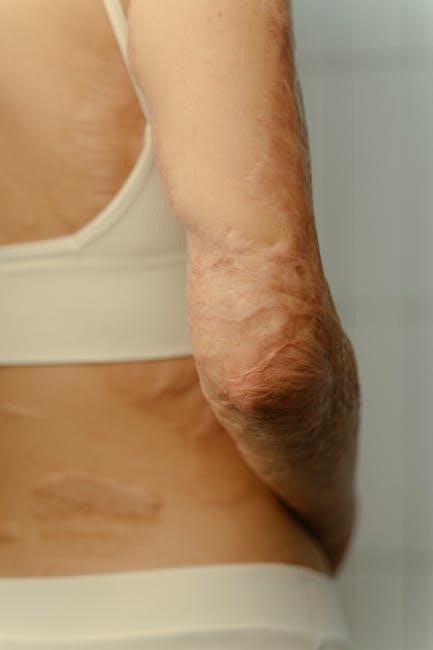cost of guided tissue regeneration
Cost of Guided Tissue Regeneration (GTR): A Comprehensive Overview
The cost of guided tissue regeneration (GTR) can fluctuate significantly, influenced by factors like location, the complexity of the case, and the materials used․ Understanding the financial aspects, alongside the procedural details, is vital for patients considering this regenerative dental treatment․ The cost can be between $2,500 to $3,500․
What is Guided Tissue Regeneration (GTR)?
Guided Tissue Regeneration (GTR) is a sophisticated dental procedure employed to regenerate lost bone and gum tissue, primarily due to periodontal disease․ It focuses on encouraging the regrowth of healthy tissues rather than merely repairing damaged ones․ The essence of GTR lies in its regenerative capacity, aiming to restore the natural structure and function of the periodontium․
The procedure involves using biocompatible membranes to create a protected space around the affected area․ This barrier prevents the ingrowth of unwanted tissues, like fast-growing epithelial cells, allowing slower-growing bone and ligament cells to populate the area․ Bone grafting materials are often used in conjunction with membranes to help regenerate or regrow tissue․
GTR is used after dental procedures to aid in tissue regeneration and can dramatically improve the prognosis of periodontally involved teeth․ GTR aims to regenerate lost bone and tissues which support teeth․ This is done by placing a membrane between the gum tissue and bone․ GTR is effective in treating gum disease, and may be combined with bone grafting for enhanced results․
Factors Influencing the Cost of GTR
The cost of Guided Tissue Regeneration (GTR) is not uniform and is subject to various influencing factors․ The complexity of the specific case significantly impacts the overall cost․ More severe cases of periodontal disease may require more extensive treatment, which naturally increases expenses․ The type of membrane used in the procedure is also a major consideration, as the materials can vary in price․

Whether bone grafting is necessary alongside GTR further influences the cost, with bone grafting adding to the overall expense․ Geographic location also plays a role, as dental service costs differ across regions․ The need for dental sedation can contribute to the total cost, depending on the type of sedation administered․
The dentist’s or periodontist’s expertise and experience can influence the fees charged for the procedure․ Additionally, the type of bone material, the membrane used, the size of the treatment area, and any BMP materials will affect the final price․ Finally, dental insurance coverage, or lack thereof, plays a significant role in the patient’s out-of-pocket expenses for GTR treatment․
Typical Cost Range of GTR
The typical cost range for Guided Tissue Regeneration (GTR) can vary considerably based on several elements․ Generally, patients might expect the cost to fall anywhere from CAD 1,400 to CAD 4,000 per site․ In London, the cost can be somewhere between £800 to £2,500 per site, depending on the case’s complexity and extent․ However, this is a broad estimation, and the actual cost can be higher or lower depending on the specific circumstances․

The price of GTR can range from $2,500 to $3,500․ If bone grafting is included, a simple graft using synthetic bone usually ranges from $300 to $800 for each implant area․ When you add the procedure of tooth removal, bone graft, and GTR, it can cost $1,600․
Factors such as the severity of gum disease, the type of materials used (membranes, bone grafts), and the need for additional procedures all influence the final cost․ The complexity of the case and the geographic location where the procedure is performed also contribute to the range․ Patients should always consult with their dental provider for an accurate estimate tailored to their individual needs․

Cost of Bone Grafting in Conjunction with GTR
When Guided Tissue Regeneration (GTR) is performed alongside bone grafting, the overall cost is significantly impacted․ Bone grafting, a procedure to rebuild bone structure, is often necessary to provide a stable foundation for tissue regeneration․ The cost of bone grafting can range from CAD 300 to CAD 1,600 per site, varying based on the material used and the complexity involved․
If the patient’s own bone is used, the patient must be hospitalized, which increases the cost․ In general, a simple bone graft that uses synthetic bone usually ranges from $300 to $800 for each implant area․
The type of bone graft material (autograft, allograft, xenograft, or synthetic) also influences the price․ Autografts, using the patient’s own bone, often involve additional surgical costs for harvesting the bone, potentially raising the total expense․ Allografts, sourced from tissue banks, usually range from $2,000 to $3,000 or more, depending on the complexity and the need for dental implants․ If the bone graft is deemed medically necessary, dental insurance may pay some of the cost․ Combining bone grafting with GTR ensures optimal tissue and bone regeneration, but it’s essential to factor in these additional expenses when planning the treatment․

Dental Insurance Coverage for GTR
Navigating dental insurance coverage for Guided Tissue Regeneration (GTR) can be complex, as policies vary significantly․ While some dental insurance plans may offer partial coverage for GTR, others may not cover it at all, often deeming it a specialized procedure․
The extent of coverage often depends on the specific plan, the diagnosis, and whether the procedure is considered medically necessary․ For instance, if GTR is required as part of a dental implant procedure, the insurance may cover some of the bone graft cost, but not the implant itself․ Typically, dental insurance may not cover the cost of implants․
Patients should thoroughly review their dental insurance policy and contact their provider to understand the specifics of their coverage for GTR․ Pre-authorization is often recommended to determine the extent of coverage and any out-of-pocket expenses․ Factors such as annual maximums, deductibles, and co-insurance can also affect the final cost․ Understanding these details will help patients make informed decisions about their treatment plan and budget accordingly․ Some dental offices offer payment plans to help manage out-of-pocket expenses for procedures like GTR․
GTR Cost Variations by Geographic Location
The cost of Guided Tissue Regeneration (GTR) can vary significantly depending on geographic location․ Factors such as the cost of living, the prevalence of periodontal disease, and the concentration of specialists in a particular area can influence the overall price of the procedure․ For example, GTR in major metropolitan areas or regions with a higher cost of living, like London, may be more expensive compared to rural areas․ In London, GTR treatment typically costs between £800 to £2,500 per site, depending on the complexity․
Additionally, the availability of dental insurance and the competition among dental practices can also impact pricing․ Areas with a higher concentration of dental specialists may offer more competitive pricing․ Patients should research the average cost of GTR in their local area and consider obtaining quotes from multiple dental practices to ensure they are receiving a fair price․ It’s also worth noting that costs can vary between different countries; for example, GTR costs in Canada may differ from those in the United States․ Factors like currency exchange rates and healthcare regulations can contribute to these differences․
Additional Costs Associated with GTR
Beyond the primary cost of the Guided Tissue Regeneration (GTR) procedure itself, several additional expenses can contribute to the overall financial burden․ These costs often include pre-operative evaluations such as X-rays or CT scans, which are necessary to assess the extent of bone and tissue loss and plan the treatment․ The price for these scans can range, adding to the initial expenses․
Furthermore, the use of dental sedation can significantly impact the total cost․ Depending on the patient’s anxiety level and the complexity of the procedure, different sedation options may be considered, each with varying price points․ Post-operative medications, such as pain relievers and antibiotics, are also essential for managing discomfort and preventing infection, adding to the overall expenditure․ Follow-up appointments are critical for monitoring healing and ensuring the long-term success of the GTR treatment․ These appointments can incur additional charges․ Patients should also factor in the cost of specialized oral hygiene products recommended by their dentist to maintain optimal oral health following the procedure․
GTR with Resorbable Barrier (Dental Code D4266)
Dental Code D4266 specifically refers to Guided Tissue Regeneration (GTR) utilizing a resorbable barrier․ This technique aims to regenerate bone and gum tissue lost due to periodontal disease or other dental conditions․ The resorbable membrane is placed to create a protected space, promoting tissue regeneration without needing a second surgery for removal․ The resorbable barrier will dissolve under the gum to protect the bone graft, as well as encourage bone regeneration․
The cost associated with D4266 involves several factors․ This includes the complexity of the case, the extent of tissue regeneration required, and the dentist’s fees․ It’s important to note that the cost can vary based on geographic location․ The advantages of using a resorbable barrier often justify the slightly higher price point compared to non-resorbable options, given the convenience and reduced need for further surgical intervention․ Patients considering GTR should discuss the specifics of D4266 with their dental provider to understand the associated costs and benefits fully․ Dental insurance may also cover a portion of the D4266 procedure․
Comparing GTR Costs to Alternatives
When exploring treatment options for periodontal disease and tissue regeneration, it’s crucial to compare the costs associated with Guided Tissue Regeneration (GTR) to its alternatives․ Traditional methods like scaling and root planing, while less expensive upfront (ranging from $150 to $300), only address existing damage and don’t stimulate tissue regrowth․ Bone grafting without GTR is another alternative, costing around $300 to $1,600 per site, but might not yield optimal results without the protective barrier provided by GTR․
Dental implants, a more extensive solution for missing teeth, involve costs ranging from $3,000 to $4,500 per tooth, potentially including bone grafting․ While implants offer a permanent solution, GTR focuses on preserving existing teeth by regenerating lost tissue․ The choice between GTR and alternatives depends on the severity of the condition, patient preferences, and long-term goals․ GTR aims to regenerate lost bone and tissues in which support the teeth․ It’s essential to consult with a dental professional to determine the most suitable and cost-effective treatment plan tailored to individual needs․

